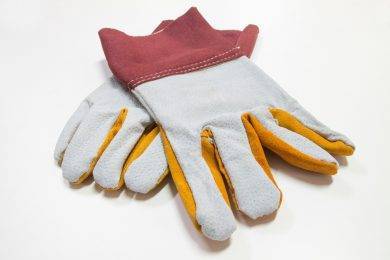Have you ever been saved by a pair of protective gloves?
Picture this: you’re out in the woodshop, cutting up a log, and suddenly, there’s a noise outside. You turn to check, losing track of your hand as you do so.
Without realizing it, your hand drifts closer and closer to the spinning saw blade. All of a sudden, you feel the rip of the saw blade hit the tough outside of your glove. You pull away your hand, thankful that you wore your protective gloves.
It’s not hyperbole to say that protective gloves have been a lifesaver for many people. They’re a key piece of hand and arm protection.
There are several different kinds of protective gloves, from medical to kevlar and everything between.
How are they made? Keep reading to learn more.
The Different Types of Protective Gloves
OSHA, the Occupational Safety and Health Administration, has four different categories that protective gloves can fall under. The categories are:
- Canvas, Leather, or Metal Mesh Gloves
- Fabric and Coated Fabric Gloves
- Liquid and Chemical Resistant Gloves
- Insulating Rubber Gloves
Each type of glove is best used under specific circumstances. For example, leather gloves are ideal for something like welding, as they protect well against sparks and moderate heat.
Coated fabric gloves are great for handling bricks and wire. They offer protection without losing the flexibility of typical fabric gloves.
Whatever you’re working on, it’s important to find the right type of PPE gloves. They could be the difference between life and death.
How Protective Gloves Are Made
In brief, here is how each type of protective glove is made:
- Leather Gloves: Sown together pieces of tanned animal hide
- Canvas Gloves: Sown together pieces of heavy woven cotton, linen, or hemp
- Metal Mesh Gloves: Individually welded stainless steel rings, joined into a fluid sheet
- Fabric Gloves: Interwoven fibers of cotton or similar fabric
- Coated Fabric Gloves: A fabric glove is coated in various protective polymers
- Liquid and Chemical Resistant Gloves: Rubber, latex, or other polymers are blended together and molded into a hand shape
- Insulating Rubber Gloves: Natural or synthetic rubber is molded into a hand shape, with more thickness than regular rubber gloves
There are other types of materials that are sometimes used to create gloves, but the components listed above are the most typical. OTEX kevlar webbing, for example, is used to make flame-resistant gloves.
Protective gloves are different than typical gloves and mittens, as they exist not to keep your hands warm, but to protect your hands.
It’s Important to Wear Protective Gloves
It’s safe to say that most people don’t want their hands to get injured while working. That’s why it’s vitally important to wear protective gloves when you’re in a situation that requires them.
Now that you know how protective gloves are made, you’ll be able to make a well-informed decision on which type is best for you.
If you’re looking to learn more about business, health, and plenty of other topics, be sure to check out one of our other articles.











